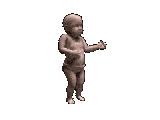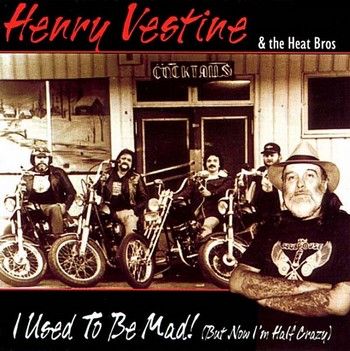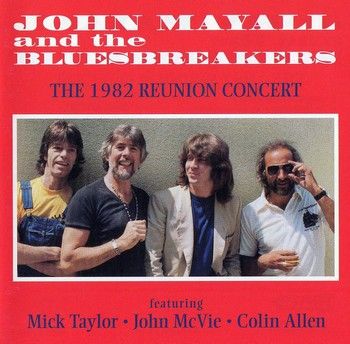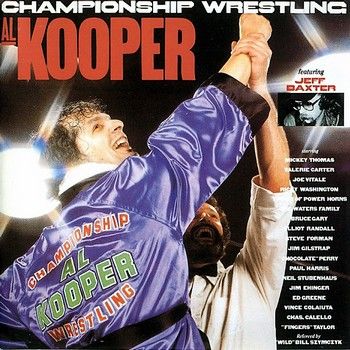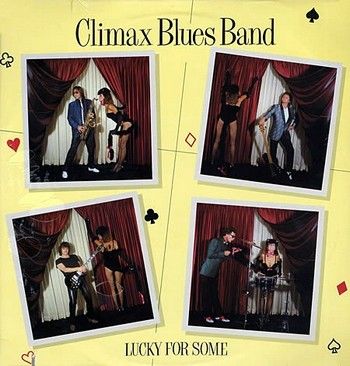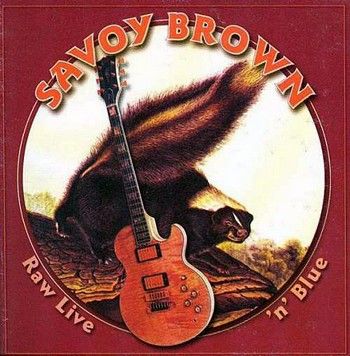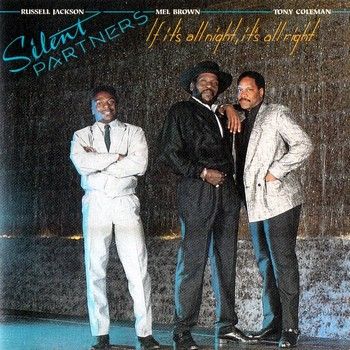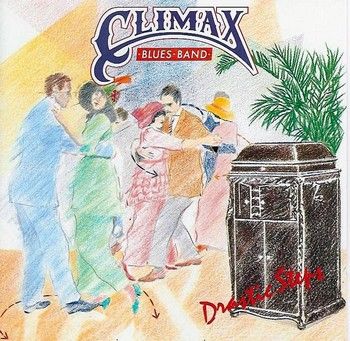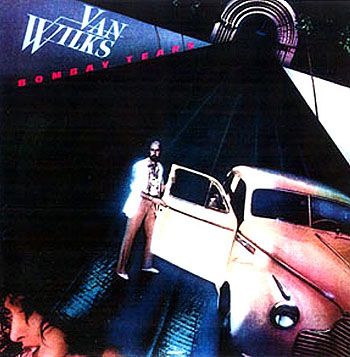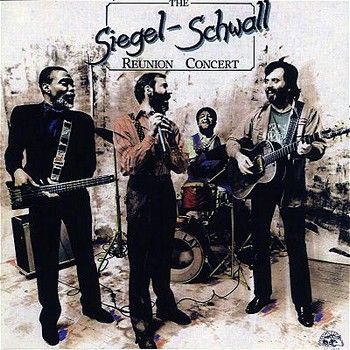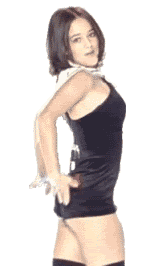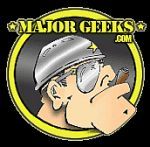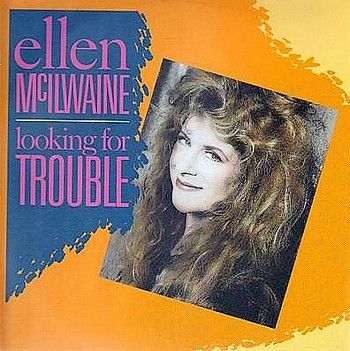
Ellen McIlwaine - Looking For Trouble - 1987 - Stony Plain
Recorded for a small Western Canadian label, this release is an unusual but affecting blend of world beat and electronics, combined with the passionate performer's powerful playing and singing. Ever restless and experimental, she delves into Jamaica with a reggaefied "Can't Find My Way Home." A spacy "All to You" revisits one of her most enduring melodies from the 1973 release We the People. Her masterful slide guitar playing isn't front and center as much as usual on her most rhythmic album to date. Dedicated, among other things, to the 12 steps to recovery, this album finds McIlwaine on the verge of moving to Canada in search of a new direction for her music and her life. © Mark Allan © 2011 Rovi Corporation. All Rights Reserved http://www.allmusic.com/album/looking-for-trouble-r129928
Richard Skelly of Allmusic.com made the comment, "Guitarist, singer, and songwriter Ellen McIlwaine is a gutsy, spirited performer who plays and sings a fiery brand of blues like few other female blues singers. Why she's not more widely known is one of the mysteries of the record business, as she's been on the scene a long time". This comment could be applied to many artists. Just to name two artists on this blog; James McMurtry, and Kyla Brox. These are great artists with talent to burn who are continually ignored by the media, now controlled by a golden circle of multi-millionaire tycoons who know everything about money, but very little about good music. True, these people know what kind of music sells which excludes many talented artists from ever been given exposure to the public. "Looking For Trouble" is one of Ellen McIlwaine's earlier releases, and is more eclectic than most of her later blues rock based albums. This is not a guitar orientated album, but Ellen has nothing to prove as regards songwriting skills or great musicianship. Ellen's "Everybody Needs It" album is @ ELMCIL/ENI Buy her "The Real Ellen McIlwaine" and support great music. [All tracks @ 256 Kbps: File size = 66 Mb]
TRACKS
A1 In D Street (I Am Discreet)
A2 Looking for Trouble
A3 All to You
A4 Beg for the Reason
B1 Don't Look Down
B2 Save the World
B3 Woodoo Woodoo (Jamin's Australian Song)
B4 Can't Find My Way Home
B5 Lean on Me
All songs composed by Ellen McIlwaine except "Can't Find My Way Home" by Steve Winwood, and "Lean on Me" by Bill Withers
MUSICIANS
Ellen McIlwaine - Guitar, Keyboards, Vocals
Kit Johnson - Bass
Bohdan Hluszko - Drums
Quammie Williams - Percussion on "Woodoo Woodoo"
Doug Wilde - Emmulator II & Akai Sampler on "Woodoo Woodoo"
Matt Zimbel - Congas & Talk Drum I on "Woodoo Woodoo"
Eugene Smith - Vocals on "Lean on Me"
The Association Of Gospel Music Ministeries [Steve Easton & Sharon, Lisa, Susan, and Karen Brown] - Vocals on "Save the World"
BIO (WIKI)
Ellen McIlwaine (born October 1, 1945, Nashville, Tennessee) is an American singer-songwriter and musician best known for her career as a slide guitarist. Born in Nashville, McIlwaine was adopted by missionaries and raised in Kobe, Japan, giving her exposure to multiple languages and cultures. She attended the Canadian Academy school in Kobe, graduating in 1963. Her first experience in music was playing Ray Charles, Fats Domino and Professor Longhair songs on piano that she heard on Japanese radio. On moving to back to the United States she bought a guitar, beginning a stage career in Atlanta, Georgia in the mid-1960s. In 1966, she had a stint in New York City's Greenwich Village where she opened every night at the Cafe Au Go Go, playing with a young Jimi Hendrix, and opening for Muddy Waters, Sonny Terry and Brownie McGhee, and Big Joe Williams. She returned to Atlanta to form the band Fear Itself, a psychedelic blues-rock band. After recording one album with Fear Itself, McIlwaine went solo, recording two albums for Polydor, Honky Tonk Angel (1972) and We the People (1973), the latter featuring a hit single, "I Don't Want to Play". Those albums, and most of her work since, have featured McIlwaine's approach to acoustic slide guitar. McIlwaine's career has been irregular, plagued by what she has often described of conflict with her record producers who wanted to change her sound. She once remarked of the 1978 album Ellen McIlwaine, "It could have been any other female vocalist, and next time it will be." As a female vocalist who is known more for her acoustic guitar, her music tends to be classified in the folk sections of record stores, despite her strong roots in blues, soul and rock music, and her cover versions of songs by Isaac Hayes, Stevie Wonder and Browning Bryant. She has also recorded several covers of songs by Jimi Hendrix: she wrote "Underground River" about him. By the mid-1970s McIlwaine's songs "Sliding", "We the People" and "Losing You" were included on the compilation album, The Guitar Album. McIlwaine's album The Real Ellen McIlwaine, recorded in Montreal in 1975 for the Kotai label, won the NAIRD Indie Award. A 1982 project, Everybody Needs It, was also successful, and featured Jack Bruce, an artist who influenced her strongly and whose songs she has covered on several of her albums. In 1980 she made her first tour of Australia, after being spotted by the Australian singer-guitarist Margret RoadKnight, who was one of the co-promoters of the tour. She returned to Australia in 1984, and during this tour was the last performer to appear at Sydney's Regent Theatre. Since moving to Canada in 1987, (first Toronto, later Alberta), McIlwaine recorded Looking for Trouble for Stony Plain Records, which has also re-released her early vinyl material on CD. Her next CD Women in (e)motion Festival/Ellen McIlwaine, recorded live in Germany in 1999; and then Spontaneous Combustion featuring Taj Mahal are on the German Tradition und Moderne label. In spite of debilitating arthritis in her hips, she undertook a third tour of Australia and New Zealand in 2003, which reunited her with RoadKnight and the other Honky Tonk Angels, who had first brought her to Australia in 1980. McIlwaine has since successfully undergone hip replacement surgery. She has long favored Guild brand guitars. She plays Guild S-250 and S-300D electric guitars; in earlier years, even when performing solo, she often played her electric guitar through an octave multiplier to emulate a bass player. Her acoustic guitar is a venerable and well-traveled Guild instrument, purchased for her in New York by a friend in 1966. This guitar has a unique history, being a former Guild company "loaner" which was used by leading artists including Mississippi John Hurt and Richie Havens while Guild repaired their own guitars. In 2006 she started her own label Ellen McIlwaine Music and released Mystic Bridge featuring the Indian tabla drummer Cassius Khan. They were joined by the soprano saxophone of Linsey Wellman on three tracks, including their version of "Take Me to the River", and harmonium playing by Amika Kushwaha on the last track, "The Question". This was a poem by Christine Steele, recited over Cassius Khan's vocal rendition of the ancient Urdu poem set to music, "Darbari Raag".
MORE
Guitarist, singer, and songwriter Ellen McIlwaine is a gutsy, spirited performer who plays and sings a fiery brand of blues like few other female blues singers. Why she's not more widely known is one of the mysteries of the record business, as she's been on the scene a long time. Adopted and raised by missionaries, McIlwaine spent her first 15 years in Japan, playing piano at age five and singing in a church choir. She began listening to U.S. Armed Forces Radio in junior high school, becoming enamored with singers like Fats Domino, Ray Charles, and Professor Longhair. McIlwaine returned to the U.S. with her parents when she was 17 and attended King College in Bristol, Tennessee and DeKalb College in Atlanta. She left college after two years and began her professional performing career in Atlanta in 1966. Shortly after she began playing professionally, folksinger Patrick Sky heard her and encouraged her to come to New York City. Sky's manager secured her some bookings at the Cafe Au Go Go in Greenwich Village, and there she shared bills with Jimi Hendrix, John Lee Hooker, and Howlin' Wolf. Richie Havens and Randy California taught her a few things about slide guitar, and she took it from there. She moved back to Atlanta and formed her first group, Fear Itself. With that group, she pioneered what was then a novel concept: she was both the guitar-slinging bandleader and the group's lead vocalist. A year later, the all-male backup group went with her to New York to record their self-titled debut album for Dot Records. McIlwaine's next two recordings were Honky Tonk Angel (1972) and We the People (1973), both for Polydor. In 1975, she recorded The Real Ellen McIlwaine for a Canadian label, Kot'Ai. Her output since then has been somewhat sporadic, but her performances have remained spirited. Her other recordings prior to the new millennium included Ellen McIlwaine (1978) for United Artists; Everybody Needs It (1982) for the Blind Pig label; and a 1988 release on Stony Plain, Looking for Trouble. (Fortunately, many of her old vinyl sides have been reissued on compact disc by Stony Plain.) After many years in Connecticut, McIlwaine relocated to Toronto, Ontario in the late '80s, and subsequently moved to Alberta. Her recordings in the 2000s have included 2001's Spontaneous Combustion, the Japanese release Live at Yellow in 2002, and 2006's adventurous change of pace Mystic Bridge, an Eastern-tinged outing featuring Cassius Khan on tablas and Linsey Wellman on sax. © Richard Skelly © 2011 Rovi Corporation. All Rights Reserved http://www.allmusic.com/artist/ellen-mcilwaine-p2071/biography
